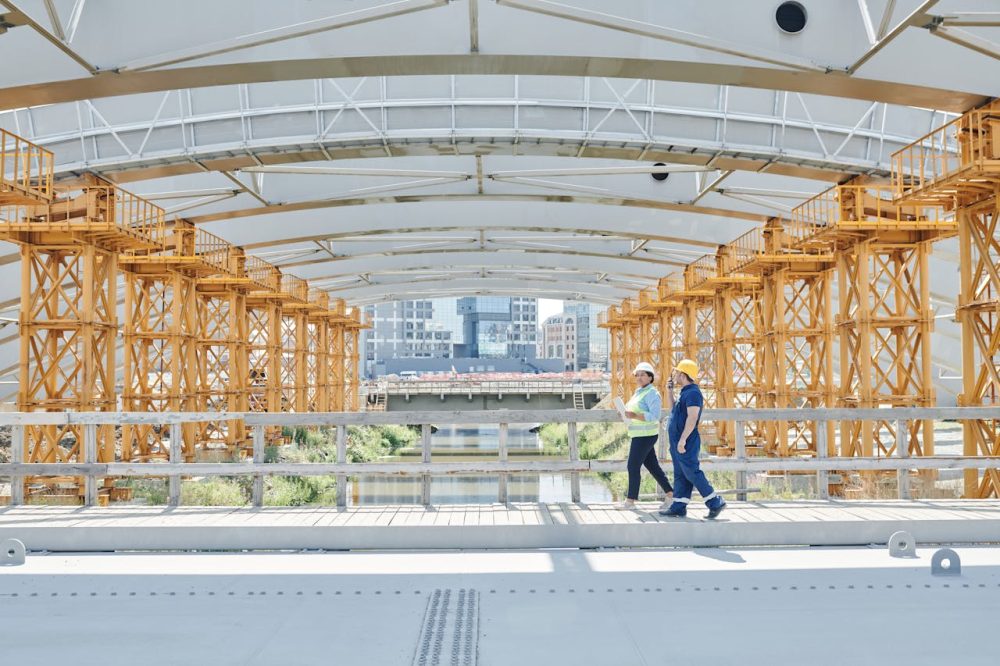The horizon of the city of New York is a mosaic of architectural styles, from historical brownstones to modern high-ups. Between this urban tapestry, a structural element is often ignored, the wall of the parapet – a low protective barrier that likes the edge of the roofs. Although appears to be modest, parapets play an important role in the construction of safety, and their maintenance is now a legal requirement under the Local Law 126 of 2021. Since January 1, 2024, NYC made annual parapet inspections compulsory for buildings like public rights. This regulation underlines the increasing recognition of parapets as potential hazards if neglected. Regular inspection is not only a case of compliance-they are essential for public safety, structural integrity and long-term cost savings.
Understanding the role of parapets
Parapets do many functions in urban architecture. They act as safety obstacles, accidentally preventing people from falling from the roofs. They also help to include roofing equipment and reduce air regeneration on roof systems. In many older buildings, parapets are decorative features that contribute to the beauty and historical value of the building. However, their contact for the elements-ran, snow, freeze-melting cycle and pollution-pollution makes them unsafe. Over time, cracks, loose bricks, spalling, and weak mortar couples may compromise their stability. Without proper inspection and maintenance, these issues may increase in severe security risks.
Legal requirements and compliance
The NYC Department of Buildings (DOB) has set strict guidelines for parapet security. Under local law 126, building owners should conduct annual inspection of public roads, footpaths, or open areas of open areas. This applies to commercial, residential and mixed-utilized buildings regardless of height. The law removes one-or two family houses and buildings that are accompanied by obstacles that prevent public access to the outer wall. The inspection should be performed by a qualified professional and includes close-up exams of the entire parapet. Inspector assess alignment, structural integrity, and deteriorating signs such as cracks, missing bricks, or rusty components. If issues are found, repair should be done immediately to avoid punishment and ensure safety.
Prevent falling debris and public threats
One of the most important reasons for regular parapet inspection is the prevention of falling debris. Loose bricks, copying stones, or other deteriorating material may fall and fall down on the pavement or roads. In a densely populated city like New York, it is a serious risk for pedestrians and vehicles. Falling masonry incidence caused injuries, cases and even fatal. Inspection, which finds and promptly addresses possible hazards, reduces these risks and thus protects the public. Building owners who fail not only to follow the danger, but also highlight themselves to legal and financial consequences.
Protection of structural integrity
Parapets are typically part of the building’s structural system. Damage to these walls can cause water infiltration into adjoining structures while weakening the structures and providing conditions favourable to mold growth. Such gradual processes gradually compromise the integrity of the roof and upper floors. Regular inspections help detect early signs of water damage, movement or instability. By addressing these issues immediately, the building owners can prevent more comprehensive and expensive repairs. Maintaining parapet health is not just about the wall – it is about preserving the overall stability of the building.
Financial and operational benefits
While some property owners may see parapet inspection as an additional expenditure, long -term financial benefits are sufficient. Regular inspections allow for initial detection of problems, which are usually less expensive to fix emergency repairs. Stopping structural failures also reduces business disruption, tenant’s complaints and risk of insurance claims. In addition, buildings that are well maintained maintain their value and appeal. In competitive real estate markets like NYC, proactive maintenance can be a major discrimination. Compliance with safety rules also increases the reputation of a building and reduces liability risk.
Role of professional inspectors
Licensed inspectors play an important role in parapet security. Their familiarity allows them to pick up on these subtle signs of deterioration that cannot really be noted by just any untrained eye. The examination assesses the waterproofing, alignment and physical condition of the parapet. They seek signs of damage such as wrong bricks, rust and rot, horizontal or diagonal cracks, and damaged mortar joints. If any defect is found, the inspector will provide guidance on strong or repair work. Their evaluations follow local construction laws and safety standards and are not just technical. A qualified professionals ensure that inspections are perfectly, accurate and legally obedient.
An active approach to urban security
In a city as dynamic and densely populated as New York, building security is a common responsibility. Parapet inspection, while considered a minor element in the equation, does play an important role when it comes to public safety and urban amenities. If they are managed through an inspection process, then building owners ensure a safe environment for residents, workers, and visitors. They also display a commitment for responsible property management and civil duties. As NYC continues to develop, active maintenance of its architectural elements – including parapets – would be necessary to preserve their character and ensure its safety.
Conclusion
Regular parapet inspections are more than a regulatory checkbox – they are an important component of security construction in New York City. For the protection of structural integrity, these inspections provide concrete benefits to the owners and the public, from preventing falling debris. With the implementation of local law 126, NYC has taken a decisive step towards increasing urban security. Building construction owners who prefer parapet maintenance not only comply with law, but also protect their investment and contribute to a safe cityscape. Finally, a well -inspected parapet is a small wall with a major responsibility.
